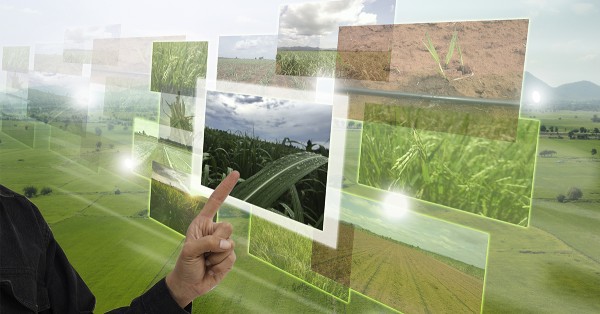It is well reported that agriculture and the way we farm needs to undergo significant change in order to produce food more efficiently and more sustainably. With poor planning and massive waste currently affecting all points along the supply chain, it’s said by experts to be the least digitised of our key industries. How can the barriers to change be overcome?

There are increasingly growing pressures on food production caused by the burgeoning of the world’s population, which is estimated to be 10 billion people by 2050. Not only this, but the need to approach the increase in food supply in more ecological and sustainable ways. Already, climate change is causing crises in crop management. Added to this is the reported labour shortage in agriculture, meaning that automation should enhance the industry rather than creating the worry of jobs to be lost.
Agriculture needs to get smarter. New technologies are ready to take on this challenge with cloud computing, robotics, Big Data, AI, and IoT all playing significant roles.
Alex Lynn @ElecSpecifier talks of the 4th revolution in agriculture. This follows the first revolution said to have been around 8000 BC, the second in the 1800s and then the “green” revolution seen in the 1970s. Now it’s time for what is described as “precision agriculture” which brings into play a range of electronics and robotics in a number of digitised processes:
- Drones taking footage to allow precise mapping to enable land analysis and achieve optimal planting patterns, and to then monitor crops for prescriptive treatment to nurture the best possible yields
- Robotic milking whereby the process is completely automated, meaning total consistency, increased frequency and better efficiency; the health and behaviour of dairy cows can also be more effectively monitored
- Smart tractors and “agribots” where tractors are self-driving and a range of sensors monitor and adjust crop treatments to ultimately improve harvests
- Sensors of all different kinds: location, optical, electrochemical, mechanical and airflow, distributed in all areas to gather a range of data to analyse and improve soil quality
- Smart irrigation where watering is automated to happen at optimal times to minimise wastage and ensure crops are not under- or over-hydrated
It seems farmers are on the whole very much open to taking on new tech. According to Steve Archer of 30MHz, speaking at the recent Cambridge Wireless International Conference in Cambridge, UK #CWIC, it’s no more of a step for farmers to take on the newest high tech systems than for the average consumer to get used to using a smartphone. It comes down to usability.
A significant hurdle to widespread adoption is component costs, which Andrew Pockson of Anglia believes need to reduce down to the right level in order for farmers to commit investment, not next season or the one after that, but now.
There is another part to the puzzle which applies across all industries as they become more digital, and that’s integration of the supply chain and cooperation within the ecosystem – both essential to the flow and efficient use of data.
Not only are key players ready to digitise their operations, all of this is imminently possible. At #CWIC2019, Ben Crowther of LetUsGrow talked of big things already happening in pilots, and as fully rolled out operations in some cases. LetUsGrow focuses on the climate issues that add to the challenges in agriculture. Climate change means that extreme weather events have become much more frequent. The “Beast from the East” in East Anglia, UK in February 2018 was the phrase coined to describe the extreme cold snap which, at the time, caused an increase to the UK consumer food bill of £45m per week. These kind of effects can continue for many months following weather fluctuations. Controlled environment agriculture, otherwise known as indoor farming, could be the answer in areas and for crops most affected by extreme or unpredictable weather conditions. Crop growing can be achieved 365 days a year and at lowered costs, and with no pesticides or herbicides involved. A recent trial carried out by LetUsGrow showed a 70% crop growth rate and a 95% reduction in the quantity of water required.
The move towards a more digitised and better managed farm isn’t limited to the developed world either. UK-based tech company AGRIinsight aims to help sub Saharan smallholder farmers to increase productivity and profitability through better information management, which in turn improves access to food.
It seems the foundations are in place and now the great minds in the agriculture and tech industries need to continue to work together to bring it all to fruition. Events like Allia’s Agri-Tech Hackathon work towards this aim, with key focus areas including the maximisation of soil productivity, improving water use efficiency, reducing greenhouse gases and boosting biodiversity. Many more events like this, small and largescale, and continuous collaboration amongst the players at all levels will help to achieve the reality of agri-tech.
